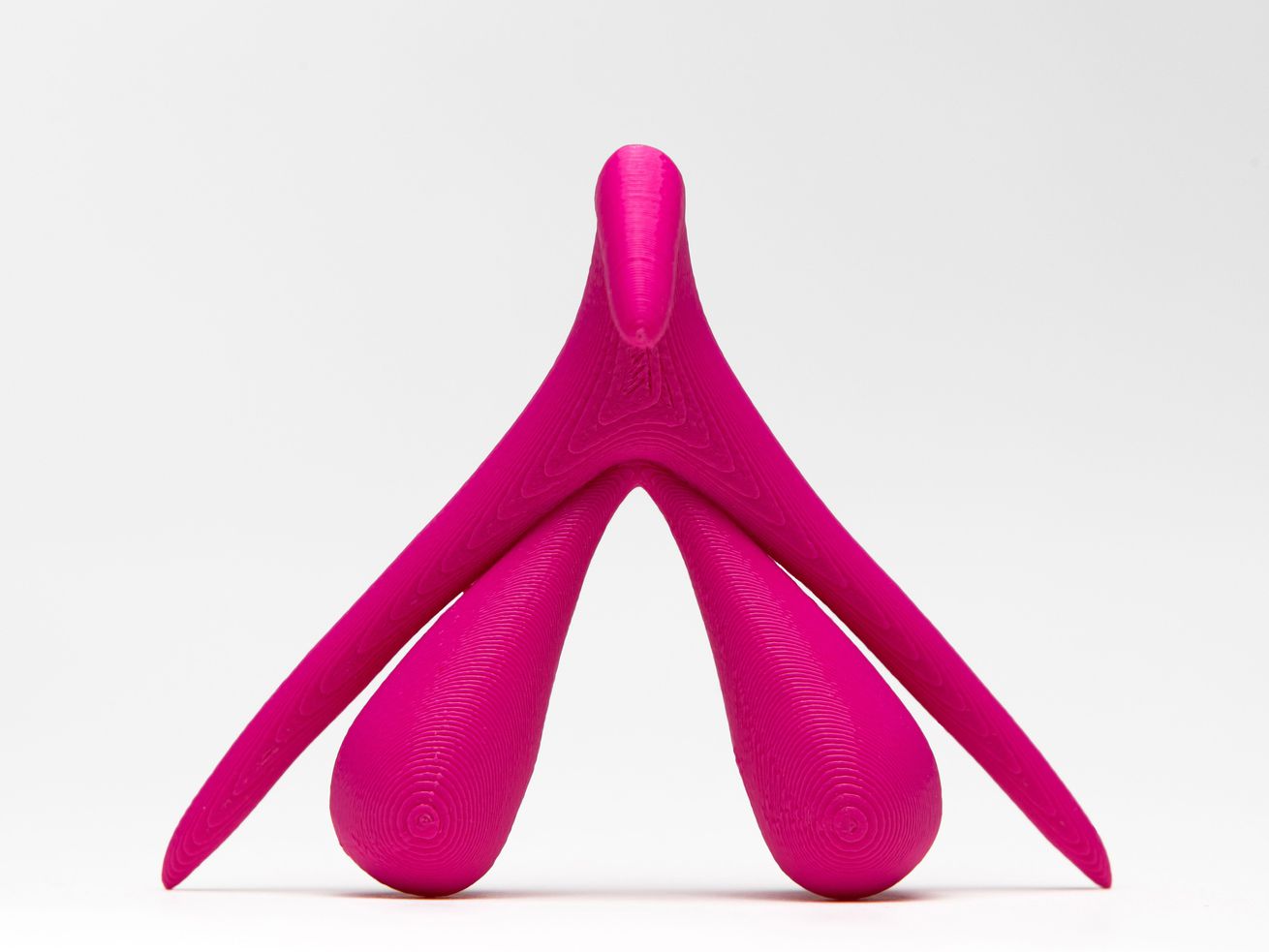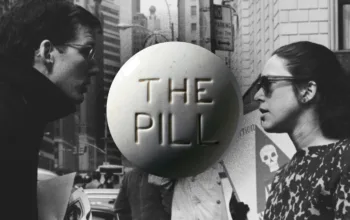And why even the phrase “reproductive health” might be kind of misleading.
There is a lot scientists still don’t know about the female reproductive system. They don’t know enough about how to treat the most common vaginal infection, bacterial vaginosis. They don’t have good solutions for many people suffering from endometriosis, a common and sometimes incredibly painful condition where tissue similar to what grows inside the uterus grows elsewhere in the body. They still have a lot of questions about what menopause does to a body.
So a few years ago, Rachel Gross, a science reporter who focuses on reproductive health, set out to write a book about the mysteries of the female reproductive system. But as she dove into the research, she started to wonder about the phrase she was using — the phrase “female reproductive system.”
/cdn.vox-cdn.com/uploads/chorus_asset/file/23949297/VAGINA_OBSCURA_978_1_324_00631_2.jpg)
First, not everyone with the organs she was researching was female. She was speaking to nonbinary people, intersex people, trans people; all people for whom this anatomy was relevant and intimate.
Also, the idea that these organs — the clitoris, the vagina, even the ovaries — were only playing a role in reproduction started to feel reductive. Of course, these organs are involved in baby-making, but, she says, “I was finding that they were doing so much else, not just sexual stuff, which is huge and often overlooked, but they were participating in immunity and protection and regeneration.”
On Unexplainable — Vox’s podcast that explores big mysteries, unanswered questions, and all the things we learn by diving into the unknown — Gross talks about one of these organs: the ovaries. She tells us a familiar story: that the ovaries are “biological clocks” that only lose eggs, without ever gaining any back. But then, she walks us through new research that questions that idea, suggesting that the ovaries may be able to generate new eggs using stem cells.
And, as Gross explains, this new way of understanding and imagining the ovaries might lead to new fertility treatments — but also, potentially, new ways to treat some of the health effects associated with menopause, like loss of bone density.
In her book, Vagina Obscura: An Anatomical Voyage, Gross finds many examples of metaphors like the ovarian “ticking clock,” or even whole stories about various pelvic organs, that have stymied science and maybe even kept scientists from solving some of the big questions about these organs.
“When you study the human body, even though the human body is not changing, you really see what you expect to see … and you kind of just blur out the rest,” she says.
I asked Gross to walk me through some more examples from her book. What follows is our conversation, edited for clarity and length.
Byrd Pinkerton
What’s an example of an organ we’ve told an incorrect story about and how it misguided science?
Rachel Gross
So one big example is the clitoris. It has been called a minuscule phallus or an underdeveloped penis or a tiny nub for hundreds and hundreds of years. And science has sort of minimized it in many ways, from literally omitting it in anatomical textbooks to just not studying 90 percent of it, which is under the surface.
It took a female urologist to say, “Wait, the research on the female side is a lot less rigorous than the male side. We haven’t looked at all the nerves, the erectile bodies.”
She found out that the clitoris has these roots and these bulbs that actually hug the vagina and swell with blood and become erectile just like the penis. So you have the exact same erectile tissues, you have the head — or the glans clitoris — which is the part you can see and touch. But then you also have a shaft that goes back into the body and you have bulbs and kind of arms that flow back into the pelvis. And all of these are made up with the same erectile tissues as the penis.
These things are super important for women undergoing surgery in this area who don’t want their nerves cut off.
If you look at it [the clitoris] as a homologous organ [to the penis], you come to such a different conclusion than it’s a tiny phallus or a little nub that’s hard to find.
Byrd Pinkerton
[At the beginning of her book, Rachel Gross describes a personal experience. She got a persistent vaginal infection, and her gynecologist recommended that she put boric acid in her vagina. The poison would kill a lot of the organisms in her vagina, including, hopefully, the one causing her problems.
Boric acid is also used as a rat poison, however, so the harshness of the treatment surprised Gross. And as she dived into the research, she realized that a new way of imagining the vagina might lead to more effective, less poisonous treatments.]
You talked about putting this boric acid pill into your vagina. Is that treatment based on any outdated story or a metaphor around the vagina that people are reconsidering?
Rachel Gross
So I think there’s been a strong attitude toward the vagina of like … it should be pure, it should be clean, it should be sterile. And from that you get all of these vaginal cleansing products. What blew my mind was looking at the vaginal microbiome as this teeming ecosystem of protection instead.
Byrd Pinkerton
What is the vaginal microbiome?
Rachel Gross
So, you’ve heard of the gut microbiome, the specific bacteria that help maintain digestive health.
Byrd Pinkerton
Yep.
Rachel Gross
Well, your vagina also has a microbiome, and it’s actually really unique to humans. It’s a mildly acidic environment created by mostly bacteria called lactobacilli, but also other bacteria, some viruses, and fungi. And they all live in harmony and protect you from invaders and kind of keep this liminal space between you and not-you healthy. It’s up against whatever gets up there, whether that is tampons, semen, birth control, jade eggs, other stuff you put in there … like your vagina is responding, protecting you and reaching a new equilibrium.
Byrd Pinkerton
Interesting. So if you’re thinking of that space as like a garden that fends off invaders, it does feel like you would reimagine putting rat poison in the middle of your garden.
Rachel Gross
Exactly. If you reimagine it as a garden and it’s fine to have weeds and different species in a garden, then it’s not about stripping it of life, which is what the rat poison does. It’s about cultivating the right mix. And that has led to innovations in vaginal microbiome transplants or probiotics that could kind of terraform the vagina. All these different ideas, it’s not clear that all of them will work, but there’s just so many smarter and more imaginative ways to think of having a healthy vagina.
Byrd Pinkerton
So, do we know anything about our bodies? Or is it all just sort of stories we’re telling ourselves that are shaping the directions that we’re taking?
Rachel Gross
I do think that we know a lot about bodies and we use that knowledge very practically in medicine to heal them and make things better. But there’s a lens of language that just directs the questions we’re asking and what we consider interesting and worthwhile. So could you swing that lens a little to the left, to the part that’s all blurred out, and focus on that? And what would you see?
Byrd Pinkerton
How do you swing the lens and reshape what we know about the reproductive system?
Rachel Gross
By introducing new people with new backgrounds into science and having them ask their questions and be interested in what they’re interested in. And for a long time, we’ve had a very similar lens.
You had people that were centering the male body as representing something and looking at the female body as an afterthought or as something that was mainly involved in reproduction. That’s mainly the interesting difference between types of bodies. So yeah, my whole book is about how once you get new voices and people in science, the whole lens changes in really exciting ways.
Author: Byrd Pinkerton
Read More



